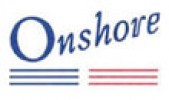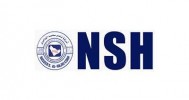Piping Supervisor
40+ Piping Supervisor Interview Questions and Answers

Asked in ADNOC

Q. If a bypass valve on top of a vessel needs to be replaced while the plant is running, how would you perform the replacement?
The bypass valve can be replaced by isolating the vessel, depressurizing it, and then replacing the valve.
Isolate the vessel by closing the inlet and outlet valves
Depressurize the vessel by venting the gas or liquid
Remove the old valve and install the new one
Repressurize the vessel and open the inlet and outlet valves

Asked in Rotostat Services

Q. How do you check the hydro test on a heat exchanger?
To check hydro test on a heat exchanger, perform visual inspection, pressure testing, and leak testing.
Perform a visual inspection of the heat exchanger for any visible damages or defects.
Conduct a pressure test by filling the heat exchanger with water or another suitable test medium and gradually increasing the pressure to the specified test pressure.
Monitor the pressure for a specified duration to ensure it remains stable without any significant drop.
Perform leak testing by...read more
Piping Supervisor Interview Questions and Answers for Freshers

Asked in Oil India

Q. What is different between iso and P&ID diagram. What's codes of cs, ss and it's fitted codes.
ISO and P&ID diagrams are different in terms of their purpose and level of detail. CS and SS have different material codes and fittings.
ISO diagrams show the physical layout of piping systems, while P&ID diagrams show the process flow and equipment
ISO diagrams provide more detailed information about pipe routing, dimensions, and supports
CS stands for Carbon Steel and has material code CS, while SS stands for Stainless Steel and has material code SS
CS and SS have different fit...read more

Asked in ADNOC

Q. What is the difference between a concentric and an eccentric reducer?
Concentric reducers have a common centerline while eccentric reducers have an offset centerline.
Concentric reducers are used in vertical piping systems to prevent accumulation of air pockets.
Eccentric reducers are used in horizontal piping systems to prevent accumulation of solids or liquids.
Concentric reducers are symmetrical while eccentric reducers are not.
Concentric reducers are easier to manufacture and install than eccentric reducers.

Asked in ADNOC

Q. What is isolation, and what are the different types of isolation?
Isolation is the process of separating a system or equipment from its energy source to ensure safety during maintenance or repair.
Isolation involves disconnecting a system or equipment from its power source, locking it out, and tagging it to prevent accidental re-energization.
There are two types of isolation: electrical isolation and mechanical isolation.
Electrical isolation involves disconnecting the electrical supply to the equipment, while mechanical isolation involves blo...read more

Asked in INTEGRAL SERVICES COMPANY

Q. How would you install pipe or equipment material in a plant?
The pipe/equipment material is installed in the plant by following a systematic process.
First, conduct a thorough analysis of the plant layout and design to determine the optimal location for pipe/equipment installation.
Prepare the work area by ensuring it is clean, safe, and free from any obstructions.
Inspect the pipe/equipment material for any defects or damage before installation.
Use appropriate tools and equipment to lift, position, and secure the pipe/equipment in place....read more
Piping Supervisor Jobs



Asked in Ramsis Engineering

Q. There are two pieces of equipment on site with piping in between that requires field welding. After welding is complete, how would you perform the hydrotest?
The hydrotest can be conducted after completing the welding of the pipe center fw.
Ensure that the equipment on both ends of the pipe are ready for the hydrotest.
Isolate the section of the pipe where the welding was done using blinds or spectacle blinds.
Connect the hydrotest pump to one end of the pipe and fill it with water.
Increase the pressure gradually to the required test pressure and hold it for the specified duration.
Inspect the pipe for any leaks or abnormalities durin...read more

Asked in Rotostat Services

Q. How many gaskets are used in a heat exchanger?
The number of gaskets in a heat exchanger varies depending on the design and size of the heat exchanger.
The number of gaskets in a heat exchanger can range from a few to hundreds, depending on the number of plates or tubes in the heat exchanger.
Plate heat exchangers typically have multiple gaskets between each plate, while shell and tube heat exchangers have gaskets between the tubes and the shell.
The number of gaskets also depends on the type of gasket used and the specific ...read more
Share interview questions and help millions of jobseekers 🌟


Asked in ADNOC

Q. What is the carbon percentage in Carbon Steel?
The carbon percentage in carbon steel varies from 0.05% to 2.0% depending on the grade.
Carbon steel is an alloy of iron and carbon.
The amount of carbon in carbon steel determines its strength and hardness.
Low carbon steel contains less than 0.3% carbon, while high carbon steel contains more than 0.6% carbon.
Some common grades of carbon steel and their carbon percentage are: A36 (0.26%), 1018 (0.18%), and 1045 (0.45%).

Asked in ADNOC

Q. When do we perform nitrogen purging, and why is it required?
Nitrogen purging is done to remove impurities and oxygen from pipelines before commissioning or maintenance work.
Nitrogen purging is done to create an inert atmosphere inside the pipeline to prevent explosions or fires.
It is required before commissioning or maintenance work to remove impurities and oxygen from the pipeline.
Nitrogen purging is also done to prevent corrosion and contamination of the pipeline.
It is commonly used in the oil and gas industry for pipeline maintenan...read more

Asked in Rotostat Services

Q. Explain the purpose of an elbow and its center.
Elbows are pipe fittings that change the direction of flow, with elbow centers determining the radius of the bend.
Elbows are typically available in 90-degree and 45-degree angles.
The elbow center is the distance from the center of the pipe to the center of the elbow's bend.
For example, a 90-degree elbow with a short radius has a center-to-end dimension that is less than the pipe diameter.
Long radius elbows are used in applications requiring smoother flow and less turbulence.

Asked in Oil India

Q. How many types of flange. What is the function of valves and types of valve.
There are several types of flanges used in piping systems. Valves are used to control the flow of fluids and gases.
Types of flanges include weld neck, slip-on, socket weld, threaded, and blind flanges.
Valves are used to start, stop, or regulate the flow of fluids or gases in a piping system.
Types of valves include gate, globe, ball, butterfly, and check valves.
Gate valves are used to start or stop the flow of fluids, globe valves are used to regulate flow, ball valves are use...read more

Asked in ADNOC

Q. Which pipe material or standard have you used in the past?
I have experience working with various pipe materials and standards including carbon steel, stainless steel, and PVC.
I have worked with carbon steel pipes in a power plant project.
I have also worked with stainless steel pipes in a pharmaceutical plant project.
In a water treatment plant project, I have worked with PVC pipes.
I am familiar with ASME B31.3, API 5L, and ASTM standards for pipe materials and welding procedures.

Asked in ADNOC

Q. Which reinforcement fittings are used in piping?
Reinforcement fittings are used to strengthen and support piping systems.
Common reinforcement fittings include tees, elbows, reducers, and couplings.
Telescoping fittings are used to adjust the length of piping systems.
Flange fittings are used to connect pipes to other equipment or structures.
Saddles are used to support piping systems on walls or ceilings.
Reinforcement fittings can be made of various materials, including steel, copper, and PVC.
Proper installation of reinforcem...read more
Asked in KUKJE Plant

Q. piping And instument diagram and working deciplain
Piping and Instrumentation Diagram (P&ID) is a schematic representation of process flow and instrumentation details.
P&ID shows the interconnection of process equipment and the instrumentation used to control the process.
It includes symbols for valves, pumps, instruments, and other equipment.
P&ID is used for design, construction, and maintenance of process systems.
Working discipline involves following the P&ID to ensure proper installation and operation of piping and instrumen...read more

Asked in Descon Engineering

Q. If any body have experience of construction, how to,get shut down experience.
Shut down experience can be gained by working on projects that involve plant shutdowns or turnarounds.
Look for job opportunities in industries that require shutdowns, such as oil and gas, petrochemicals, and power plants.
Volunteer to work on shutdown projects to gain experience.
Attend training courses and workshops on shutdown management.
Network with professionals in the industry to learn about upcoming shutdown projects.
Document your experience and highlight it on your resum...read more

Asked in Adani Gas

Q. What is the difference between a pipe and a tube?
Pipes are used to transport fluids and gases, while tubes are used for structural purposes.
Pipes have a standardized outer diameter and wall thickness, while tubes have a standardized inner diameter and wall thickness.
Pipes are typically round, while tubes can be round, square, or rectangular.
Pipes are often used in plumbing and HVAC systems, while tubes are used in construction and engineering applications.
Pipes are usually measured by their inside diameter, while tubes are ...read more

Asked in INTEGRAL SERVICES COMPANY

Q. Can you identify piping symbols and interpret isometric drawings?
Piping symbols are graphical representations of pipes, valves, fittings, and other components used in piping systems. Isometric drawings provide a 3D view of the piping system.
Piping symbols include straight pipes, elbows, tees, reducers, valves, and pumps
Isometric drawings show the piping system in 3D with dimensions and annotations
Symbols and isometric drawings are used to communicate design and construction details to engineers, contractors, and fabricators

Asked in Saudi Aramco

Q. What is a Permit to Work?
Permit to work is a formal written system used to control high-risk activities.
It is a document that outlines the work to be done and the hazards associated with it.
It is used to ensure that all necessary safety precautions are taken before work begins.
It is issued by a competent authority and must be signed by all parties involved in the work.
Examples include hot work permits, confined space permits, and excavation permits.

Asked in Rotostat Services

Q. How many heat exchangers...?
The number of heat exchangers depends on the specific project requirements and design.
The number of heat exchangers can vary greatly depending on the size and complexity of the project.
It is common to have multiple heat exchangers in industrial plants and refineries.
The number of heat exchangers may also depend on the type of process being carried out.
For example, a petrochemical plant may have dozens of heat exchangers to facilitate various chemical reactions.
In contrast, a ...read more

Asked in ADNOC

Q. Why are elbow fittings used in piping?
Elbow lets change the direction of flow in piping system.
Elbows are used to change the direction of flow in a piping system.
They come in different angles such as 45°, 90° and 180°.
They are available in different materials such as PVC, copper, steel, etc.
Elbows can be welded or threaded onto the piping system.
They are commonly used in plumbing, HVAC, and industrial piping systems.
Asked in KUKJE Plant

Q. Welding proces and how to use equipments
Welding process involves joining two metal pieces using heat and pressure. Proper use of equipment is crucial for safety and quality.
Understand the type of metal being welded and select appropriate welding process
Ensure proper ventilation and safety measures are in place
Clean and prepare the metal surfaces before welding
Use correct welding technique and maintain proper distance from the workpiece
Regularly inspect and maintain welding equipment
Examples of welding processes inc...read more

Asked in INTEGRAL SERVICES COMPANY

Q. How do you choose scaffolding?
Scaffolding selection depends on the type of work, height, weight, and duration of use.
Assess the type of work to be done
Consider the height and weight requirements
Evaluate the duration of use
Choose the appropriate scaffolding type, such as frame, system, or suspended scaffolding
Ensure compliance with safety regulations and standards
Asked in Gsca

Q. What is a DSS pipe and where is it used?
DSS pipe stands for Duplex Stainless Steel pipe which is used in corrosive environments.
DSS pipe is made of a combination of austenitic and ferritic stainless steels.
It is highly resistant to corrosion and cracking.
DSS pipe is commonly used in offshore oil and gas production, chemical processing, and desalination plants.
It is also used in high-pressure and high-temperature applications.
DSS pipe is more expensive than traditional stainless steel pipe due to its unique properti...read more
Asked in Gsca Ksa

Q. How many section of mechanical.
The question is unclear and lacks context.
Request clarification on what is meant by 'section of mechanical'.
Ask for more information about the specific context or industry being referred to.
Provide examples of possible interpretations to help narrow down the question.

Asked in Descon Engineering

Q. How many types of piping are there?
There are several types of piping used in various industries, including process piping, utility piping, and plumbing piping.
Process piping is used to transport fluids or gases in industrial processes.
Utility piping is used for services such as water, steam, or compressed air.
Plumbing piping is used for water supply and drainage systems in buildings.
Other types of piping include fire protection piping, gas piping, and refrigeration piping.

Asked in Rotostat Services

Q. Explain the OD and CF of a pipe.
OD (Outer Diameter) and CF (Circumference Factor) are critical dimensions in piping systems for fitting and flow calculations.
OD refers to the outer diameter of the pipe, which is crucial for fitting compatibility.
CF is calculated as CF = π × OD, used for determining flow area.
For example, a pipe with an OD of 6 inches has a CF of approximately 18.85 inches.
Understanding OD and CF helps in selecting the right pipe for pressure and flow requirements.

Asked in Rotostat Services

Q. Tell me about flanges and their classes.
Flanges are mechanical components used to connect pipes, and their class indicates pressure-temperature ratings.
Flanges are used to join two sections of pipe or connect pipe to other equipment.
Common flange types include weld neck, slip-on, blind, and threaded.
Flange classes (e.g., Class 150, Class 300) indicate the pressure rating and temperature limits.
For example, a Class 150 flange can handle lower pressures compared to a Class 300 flange.
Material selection for flanges is...read more
Asked in Gsca Ksa

Q. Where do you conduct Tool Box Talks?
I follow the TBT (Toolbox Talk) at the job site to ensure safety and compliance.
I actively participate in the TBT meetings and discussions.
I follow the safety guidelines and procedures discussed in the TBT.
I ensure that all workers under my supervision are aware of the TBT topics and adhere to them.
I document any issues or concerns raised during the TBT and take appropriate actions.
I regularly review and update the TBT topics to address any new safety concerns or regulations.

Asked in ADNOC

Q. How do you perform positive isolation?
Positive isolation is the process of completely isolating a section of piping or equipment from the rest of the system to perform maintenance or repairs.
Identify the section of piping or equipment that needs to be isolated
Close all valves and block all lines leading to and from the section
Use blind flanges or spectacle blinds to physically block the section
Ensure that the isolation is secure and pressure tested before beginning work
Remove the isolation once work is complete a...read more
Interview Questions of Similar Designations
Interview Experiences of Popular Companies








Reviews
Interviews
Salaries
Users

















